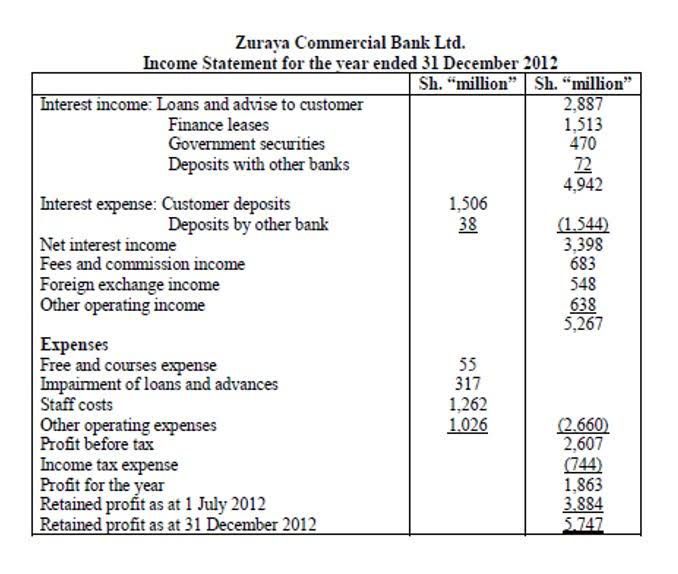Accounting Equation Overview, Formula, and Examples

Remember,your net income is made up of your total revenue minus your expenses. If you have high sales revenue but still have a low profit margin, it might be a high time to take a look at the figures making up your net income. By subtracting your revenue from your expenses, you can calculate your net income.
Cash ratio equation
- Good examples of assets are cash, land, buildings, equipment, and supplies.
- In order to make sure that the accounts of a company are balanced, the total assets must equal the sum of the total of all liabilities and owner’s equity.
- Kashoo offers a surprisingly sophisticated journal entry feature, which allows you to post any necessary journal entries.
- The total dollar amount of debits and credits always needs to balance.
- Essentially, the representation equates all uses of capital (assets) to all sources of capital, where debt capital leads to liabilities and equity capital leads to shareholders’ equity.
- It’s essentially the same equation because net worth and owner’s equity are synonymous with each other.
- In the coming sections, you will learn more about the different kinds of financial statements accountants generate for businesses.
Often, a company may depreciate capital assets in 5–7 years, meaning that the assets will show on the books as less than their “real” value, or what they would be worth on the secondary market. The accounting equation is fundamental to the double-entry bookkeeping practice. Its applications in accountancy and economics are thus diverse.
How to Build Conflict Resolution Skills: Case Studies and Examples
An accounting transaction is a business activity or event that causes a measurable change in the accounting equation. Merely placing an order for goods is not a recordable transaction because no exchange has taken place. In the coming sections, you will learn more about the different kinds of financial statements accountants generate for businesses.
Examples of Accounting Transactions

Angela Boxwell, MAAT, brings over 30 years of experience in accounting and finance. As the founder of Business Accounting Basics, she offers a wealth of free advice and practical tips to small business owners and entrepreneurs dealing with business finance complexities. Owners equity, or simply, equity, is the value of the business assets that the owner can lay claim to. Let’s plug this into the equation to see if Ed’s accounts are balanced. With the information that is given in the example, we see that Ed has a store that is valued at $40,000 and equipment that is valued at $10,000. Looking back, we see that Ed owes the bank $25,000 and his employee $15,000.
- Owner’s equity is also referred to as shareholder’s equity for a corporation.
- This equation is used to track a company’s financial health and ensure that its assets are not being overspent.
- The shareholders’ equity number is a company’s total assets minus its total liabilities.
- Now that you understand the parts of the accounting equation, let’s talk about how it works.
- Understanding how to use the formula is a crucial skill for accountants because it’s a quick way to check the accuracy of transaction records .
The accounting equation states that total assets is equal to total liabilities plus capital. This lesson presented the basic accounting equation and how it stays equal. In above example, we have observed the impact of twelve different transactions on accounting equation. Valid financial which of the following is the basic accounting equation? transactions always result in a balanced accounting equation which is the fundamental characteristic of double entry accounting (i.e., every debit has a corresponding credit). All assets owned by a business are acquired with the funds supplied either by creditors or by owner(s).
Examples of debits and credits in double-entry accounting
Adam Hayes, Ph.D., CFA, is a financial writer with 15+ years Wall Street experience as a derivatives trader. Besides his extensive derivative trading expertise, Adam is an expert in economics and behavioral finance. Adam received his master’s in economics from The New School for Social Research and his Ph.D. from the University of Wisconsin-Madison in sociology. He is a CFA charterholder as well as holding FINRA Series 7, 55 & 63 licenses. He currently researches and teaches economic sociology and the social studies of finance at the Hebrew University in Jerusalem. Best suited for very small businesses, Sage Business Cloud Accounting is also a good choice for freelancers and sole proprietors who want to manage business finances properly.
Retained earnings equation
The residual value of assets is also what an owner can claim after all the liabilities are paid off if the company has to shut down. The basic accounting equation is very useful in analyzing transactions with the global practice of double entry in bookkeeping and ledger organization. For a more detailed https://www.bookstime.com/ analysis of the shareholder’s equity, an expanded accounting formula may also be used. It gives meaning to the balance sheet structure and is the foundation of double-entry accounting. Double-entry accounting is the practice where one transaction affects both sides of the accounting equation.
What Are the Three Elements in the Accounting Equation Formula?
A company’s quarterly and annual reports are basically derived directly from the accounting equations used in bookkeeping practices. These equations, entered in a business’s general ledger, will provide the material that eventually makes up the foundation of a business’s financial statements. This includes expense reports, cash flow and salary and company investments. The accounting equation helps to assess whether the business transactions carried out by the company are being accurately reflected in its books and accounts.

